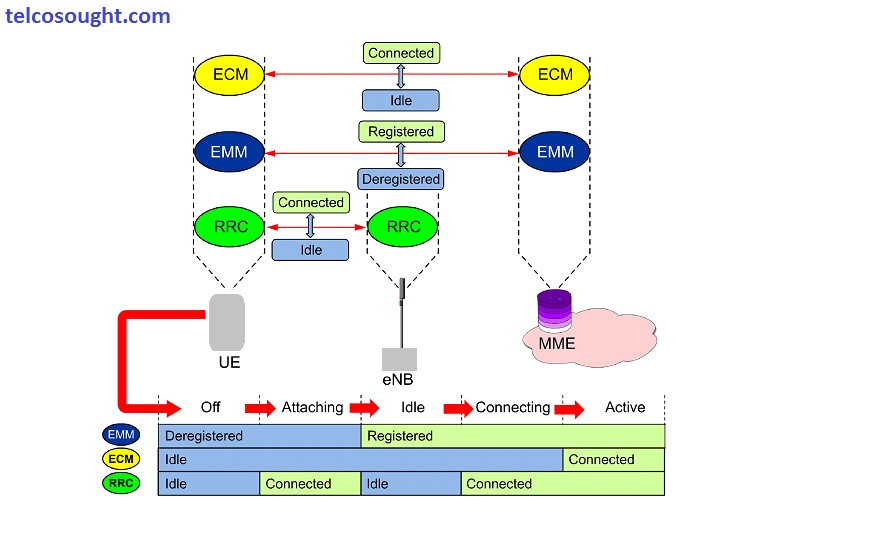The LTE State Management to ensure that it can provide efficient service to UEs for effective service, EPS must be competent in defining and keeping in mind the availability and accessibility of every terminal. It does this by maintaining two contexts for each UE: the EMM (EPS Mobility Management) context, and the ECM (EPS Connection Management) context
LTE State Management
Each one is managed by state machines’ that are located within the UE and the MME.
A second state machine runs within the UE and serves eNB to monitor the terminal’s RRC state, which could be RRC-IDLE (which is a reference to the UE which is in idle) as well as RRC-CONNECTED (which refers to an active traffic bearer in a UE with a transportation bearer).
EMM is similar to MM processes used in older networks. It is designed as a way to guarantee that the MME has enough location data to provide services to every UE as needed. Two EMM states managed through the MME are EMM DEREGISTERED and EMM REGISTERED.
The ECM states define the status of a UE’s connectivity in relation to EPC, e.g. whether there is an S1 connection between the UE and the EPC and if it is not. Two ECM states, ECM-IDLE as well as ECM-CONNECTED.
While ECM and the EMM, as well as ECM states, are not dependent on one another but they are both connected and any discussion about the reachability of a UE would be best served by looking at the two states in a unified way. There are three major stages of UE activity that can be described as an amalgamation of EMM and ECM states. This is with the UE turned off, an idle UE being in idle, and the UE that has an active connection to the internet.
Also, you can read : Introduction of LTE

